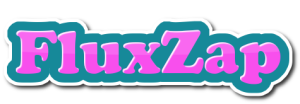Wikipedia Editing Tips for Beginners: A Complete Guide
Introduction
Editing Wikipedia can seem intimidating at first, but it’s a rewarding experience if you’re passionate about contributing to a global knowledge base. Wikipedia is the largest free encyclopedia online, and anyone can edit it. However, to maintain the accuracy and integrity of the platform, there are some guidelines and best practices to follow. This article provides essential Wikipedia editing tips for beginners to help you make effective, quality edits that stick.

1. Create a Wikipedia Account
While it’s possible to edit Wikipedia anonymously, creating an account offers several benefits:
- Edit history tracking: Keep track of your contributions.
- Building trust: Registered editors are more trusted, especially as they gain experience.
- Advanced tools: With an account, you can upload files, create new pages, and participate in discussions.
To register, simply click on the “Create account” link at the top right of any Wikipedia page and fill in the required details. Alternatively, if you are looking for aged Wikipedia accounts to get a head start, you can explore old Wikipedia profiles to fast-track your editing experience.
2. Familiarize Yourself with Wikipedia’s Guidelines
Before diving into editing, take some time to understand Wikipedia’s policies:
- Neutral Point of View (NPOV): Articles should be written impartially, without bias.
- Verifiability: All information must be backed by reliable sources. If you cannot verify a fact, it doesn’t belong in Wikipedia.
- No Original Research: Wikipedia is not the place for personal theories, opinions, or unpublished ideas.
Understanding these guidelines helps avoid common mistakes and ensures your edits meet community standards.
3. Start Small with Minor Edits
For beginners, it’s best to start with minor edits:
- Fix typos and grammar: This is a great way to get comfortable with the editing interface.
- Improve formatting: Add bullet points, fix headings, or format citations properly.
- Add links: Internal links to other Wikipedia articles improve content interconnectivity and readability.
By making small but valuable contributions, you’ll gain confidence and learn the editing process without overwhelming yourself.
4. Use the Sandbox to Practice
Wikipedia has a “sandbox” where you can practice editing without affecting live articles. This is perfect for testing new content, formatting, or templates. To access it, click on your username (once logged in), and you’ll find a link to your sandbox on your user page.
5. Always Provide Reliable Sources
Citations are crucial for Wikipedia content. Whenever you add new information, back it up with credible, third-party sources. Some acceptable sources include:
- Academic journals
- Reputable newspapers and magazines
- Books by established authors
Avoid citing blogs, personal websites, or social media as they don’t meet Wikipedia’s standards for verifiability.
6. Be Respectful in Edit Summaries
Whenever you make an edit, you’ll see an option to write an “edit summary.” Use this to briefly explain what changes you’ve made and why. This helps other editors understand your intentions, reducing the chances of your edits being reverted. Be clear, concise, and respectful.
7. Learn to Use Talk Pages
Wikipedia has “Talk Pages” for each article and user, where editors can discuss proposed changes or issues with a page. This is an excellent way to get feedback from experienced editors and ask for help if you’re unsure about making a change. Always remain polite and open to suggestions, as Wikipedia thrives on collaboration.
8. Avoid Conflicts of Interest
Wikipedia strongly discourages editing articles about yourself, your business, or topics you’re personally involved with, as it creates a conflict of interest. If you’re too close to a subject, your edits may be seen as biased or promotional, and they could be reverted by other editors. Stick to topics where you have no vested interest.
9. Monitor Your Contributions
Wikipedia allows you to keep track of your edits. To do this, go to your “Contributions” page, which shows a list of all the pages you’ve edited. Monitoring your changes can help you learn from any reversions or mistakes and see how your contributions are evolving over time.
10. Stay Patient and Persistent
As a beginner, some of your edits might be reverted, but don’t get discouraged. Wikipedia has a huge community of editors dedicated to maintaining quality. If your edit is reverted, review the reasons (usually found in the edit history or talk page), make improvements, and try again. Over time, you’ll become more familiar with what kinds of edits are accepted.
Wikipedia Editing Tips for Beginners: A Complete Guide’s Conclusion
Editing Wikipedia can be a fulfilling way to contribute to global knowledge, but it requires patience, research, and adherence to guidelines. By following these Wikipedia editing tips for beginners, you’ll start your editing journey on the right foot, gradually improving both your skills and the encyclopedia itself. Happy editing!
For those seeking to make faster progress with an established Wikipedia account, check out old Wikipedia profiles to jumpstart your editing experience.





Leave a Reply
Want to join the discussion?Feel free to contribute!